Francis in the Navy
Cast & Crew
Arthur Lubin
Donald O'connor
Martha Hyer
Richard Erdman
Jim Backus
Clint Eastwood
Film Details
Technical Specs

Synopsis
In the U. S. Army intelligence office, bumbling lieutenant Peter Stirling receives a coded message from his friend, Francis, a talking mule. The note urges Pete to hurry to the Coronado, California naval base, where Francis is about to be sold as surplus. Pete rushes to the train station, but before he can board, nurse Betsy Donevan mistakes him for her shell-shocked brother, Navy boatswain Slicker Donevan. She tries to forcibly remove his uniform so he will not get into trouble for impersonating an Army officer. Finally she realizes that Pete is not Slicker but merely his mirror image. The confusion continues in Coronado, where Slicker's best friend Murph sees Pete and quickly assembles his buddies, Jonesy, Tony and Rick, to "save" Slicker. Later, while Pete bids to buy Francis at auction, the real Slicker returns to his base, where his friends inform him that they just saw him dressed in an Army uniform. Slicker heads to the auction, and there steals Pete's wallet when he puts it down. When Pete then cannot pay for his bid, a disgusted Francis instructs him to pawn his bags. Outside the pawnshop, however, Slicker calls the military police and urges them to arrest his double, supposedly to keep him out of trouble. As soon as the MPs strip Pete of his uniform, Slicker steals it and assumes Pete's identity. At the Navy base, Commander Hutch, who considers Slicker to be his star boatswain and a naval hero, immediately places Pete in the psychiatric ward. There, Pete learns that Slicker is also a famed ladies' man, when each nurse kisses him warmly. After days of failing to convince the doctors that he is not Slicker, Pete sneaks into the testing site where Francis is being used for transportation experiments. The mule advises him to pretend he is Slicker in order to obtain a release from the hospital. Soon, Pete is under the watch of Slicker's four buddies, and, upon seeing Nancy again, finds it difficult to act as if she is his sister. On his first outing as boatswain, Pete capsizes the boat, but when he revives, he discovers that because the steering was faulty, he is now being lauded as a genius for having steered the boat close to the shore. His pleasure, however, is soon cut short by the news that he is to enter a boxing match that evening with the Navy's champion fighter. Pete races to consult Francis, who has grown fond of his cushy pen and informs Pete that in one week the Army will be joining the Navy for tactical maneuvers, at which point Pete will be able to argue his case to the Army commander. Pete names Francis his mascot for the fight, and as soon as it begins, the mule tries to help him by greasing his opponent's shoes and sitting on the starter bell. Despite the attempts, Pete is quickly knocked out, and although he feels humiliated, he is delighted by the continued loyalty of Slicker's four friends. Suddenly realizing that the Navy is as important as the Army, Pete throws himself into studying Naval rules, with Francis as his tutor, and excels at his duties during the following week's intensive training. One day, when Pete is visiting Francis at the testing site, Slicker arrives and, nonplussed to hear Francis talk, gratuitously offers to turn himself in. Although Pete agrees, Francis convinces him that it was a harmless prank and he should take the opportunity to return to the Army. Pete, jealous of Francis' quick attachment to Slicker, heads to the bus station, but is once again stopped, stripped and returned to Coronado by MPs. In the barracks, Slicker provides Pete with Navy clothes and helps him sneak out, but Pete, in his hurry to avoid Hutch, mistakenly climbs into the barracks again through a window. Hutch enters, causing Slicker to hide in a duffle bag, and when the bag falls out of a truck, he hits his head. He wakes in the hospital, attended to by Nancy, who informs him that Pete, at the risk of being court-martialed, has taken Slicker's place as head boatswain in the Army/Navy maneuvers. Pete, Murph and Jonesy are placed in a special amphibious "duck" boat, which must reach the shore before the supply ship. When the good-luck horseshoe in Pete's pocket renders the compass useless, however, he inadvertently steers the "duck" ten miles out of position forcing the sailors to drive it over land to the correct beach. On the way, Jonesy climbs onto a truck to ascertain their position and, when the truck turns a corner, tells them to go on without him. Soon after, while Pete and Murph are asking directions in a small town, a child affixes the "duck's" anchor to a police motorcycle, and Murph is arrested. Pete travels on until he runs out of gas, and is thrilled to spot Francis, the Navy's new mascot, on the street. Together, they trick the gas station attendant into filling the tank, and reach the beach only moments ahead of the supply ship, earning commendations from Hutch. Days later, after Francis and Pete bid goodbye to Slicker and Nancy, they board the train to the Army base. Once inside, however, Pete is forced to flee from MPs, who still insist that he is an AWOL Slicker, and spends the trip in the barn car with his best friend.

Director
Arthur Lubin
Cast
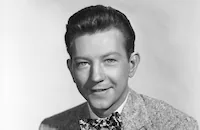
Donald O'connor

Martha Hyer
Richard Erdman

Jim Backus
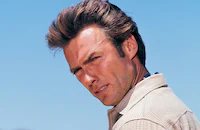
Clint Eastwood
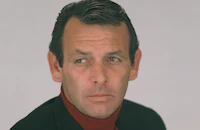
David Janssen
Leigh Snowden
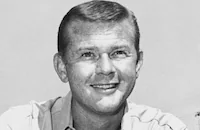
Martin Milner

Paul Burke
Phil Garris
Myrna Hansen
Jane Howard

Virginia O'brien
William Forrest
Francis
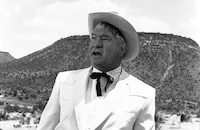
Chill Wills

Hy Averback

James Todd
Walter Woolf King
Dick Wessel
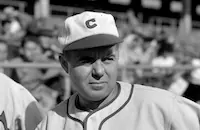
Ray Walker
John Pickard
Henry Kulky
Arthur D. Gilmour

Kenneth Macdonald

Carl Switzer
Olan Soule
David Thursby
Frank Chase
Jil Jarmyn
John Compton
Robert Hoy
Mike Mchale
Robert Slaven
George Mather
Frankie Van
Garry Thorne
Joey Ray
Lee Graham
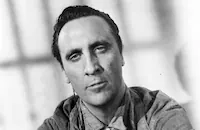
Timothy Carey
Joseph J. Greene
Louis Towers
Harvey Parry
James Craven
Erville Alderson
Mary Newton
Crew
Phil Bowles
Leslie I. Carey
Milton Carruth
F. D. Fane Commander, U.s.n.r.
Devery Freeman
Russell A. Gausman
Joseph Gershenson
Alexander Golitzen
Carl Guthrie
Ray Jeffers
Bill Newberry
Stanley Rubin
Ray Snyder
Joan St. Oegger
Clifford Stine
Lt. Don Terry
Bud Westmore
Frank H. Wilkinson

Film Details
Technical Specs

Articles
Donald O'Connor, 1925-2003
Born Donald David Dixon O' Connor in Chicago on August 28, 1925, he was raised in an atmosphere of show business. His parents were circus trapeze artists and later vaudeville entertainers, and as soon as young Donald was old enough to walk, he was performing in a variety of dance and stunt routines all across the country. Discovered by a film scout at age 11, he made his film debut with two of his brothers in Melody for Two (1937), and was singled out for a contract by Paramount Pictures. He co-starred with Bing Crosby and Fred MacMurray in Sing, You Sinners (1938) and played juvenile roles in several films, including Huckleberry Finn in Tom Sawyer - Detective (1938) and the title character as a child in Beau Geste (1939).
As O'Connor grew into adolescence, he fared pretty well as a youthful hoofer, dancing up a storm in a string of low-budget, but engaging musicals for Universal Studios (often teamed with the equally vigorous Peggy Ryan) during World War II. Titles like What's Cookin', Get Hep to Love (both 1942), Chip Off the Old Block and Strictly in the Groove (both 1943) made for some fairly innocuous entertainment, but they went a long way in displaying O'Connor's athletic dancing and boyish charm. As an adult, O'Connor struck paydirt again when he starred opposite a talking mule (with a voice supplied by Chill Wills) in the enormously popular Francis (1949). The story about an Army private who discovers that only he can communicate with a talking army mule, proved to be a very profitable hit with kids, and Universal went on to star him in several sequels.
Yet if O'Connor had to stake his claim to cinematic greatness, it would unquestionably be his daringly acrobatic, brazenly funny turn as Cosmo Brown, Gene Kelly's sidekick in the brilliant Singin' in the Rain (1952). Although his self-choreographed routine of "Make "Em Laugh" (which includes a mind-bending series of backflips off the walls) is often singled out as the highlight, in truth, his whole performance is one of the highlights of the film. His deft comic delivery of one-liners, crazy facial expressions (just watch him lampoon the diction teacher in the glorious "Moses Supposes" bit) and exhilarating dance moves (the opening "Fit As a Fiddle" number with Kelly to name just one) throughout the film are just sheer film treats in any critic's book.
After the success of Singin' in the Rain, O'Connor proved that he had enough charisma to command his first starring vehicle, opposite Debbie Reynolds, in the cute musical I Love Melvin (1953). He also found good parts in Call Me Madam (1953), There's No Business Like Show Business (1954), and Anything Goes (1956). Unfortunately, his one attempt at a strong dramatic role, the lead in the weak biopic The Buster Keaton Story (1957) proved to be misstep, and he was panned by the critics.
By the '60s, the popularity of musicals had faded, and O'Connor spent the next several years supporting himself with many dinner theater and nightclub appearances; but just when it looked like we wouldn't see O'Connor's talent shine again on the small or big screen, he found himself in demand at the dawn of the '90s in a string of TV appearances: Murder She Wrote, Tales From the Crypt, Fraser, The Nanny; and movies: Robin Williams' toy-manufacturer father in Toys (1992), a fellow passenger in the Lemmon-Matthau comedy, Out to Sea (1997), that were as welcoming as they were heartening. Survivors include his wife, Gloria; four children, Alicia, Donna, Fred and Kevin; and four grandchildren.
by Michael T. Toole

Donald O'Connor, 1925-2003
Quotes
Trivia
Notes
The working title of this film was The Navy Gets Francis. A February 1955 Hollywood Reporter news item adds Ed Reamers to the cast, but his appearance in the final film has not been confirmed. Francis in the Navy marked the feature film debut of Clint Eastwood. For more information on the "Francis" series, please consult the Series Index and see the entry for Francis in AFI Catalog of Feature Films, 1941-50.














